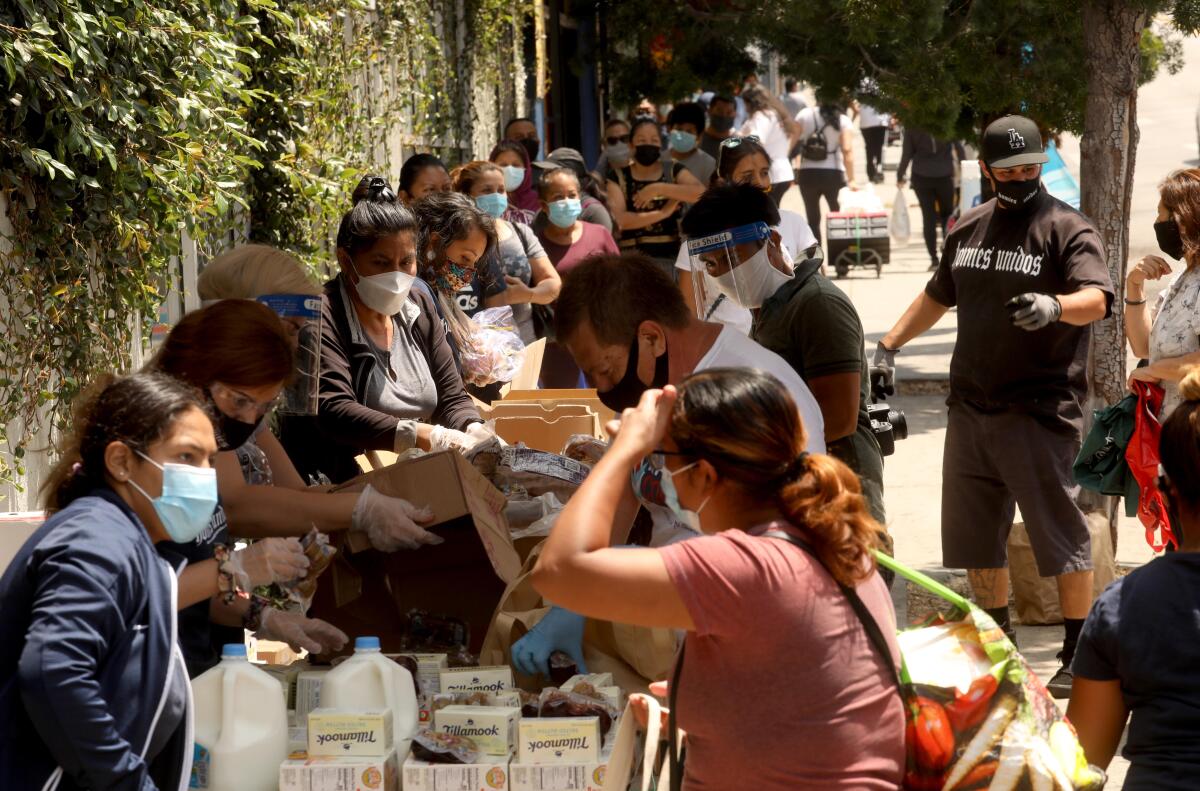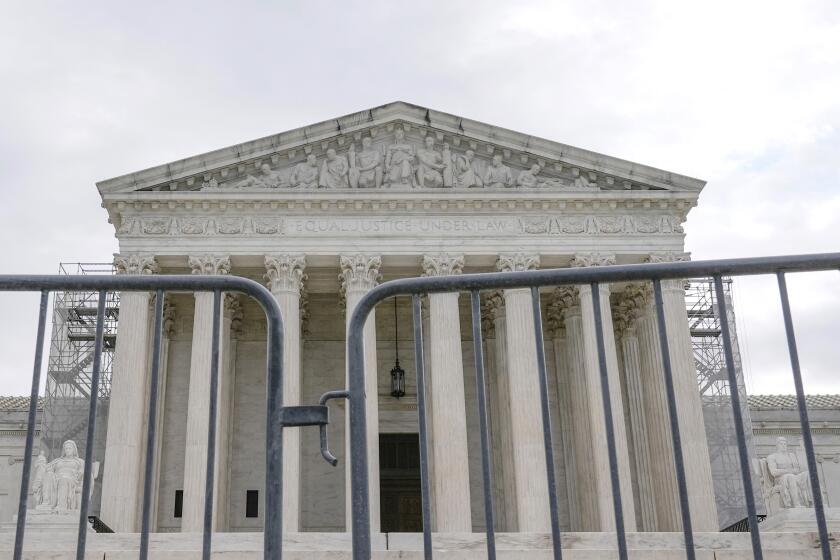Economic expansion in 2019 brought income gains, poverty reduction but more uninsured

New government data on household income and poverty for 2019 paints a broadly positive picture of the nation’s long economic expansion — gains now in the past as the pandemic has inflicted severe damage on millions of Americans.
But another key measure of economic well-being, the share of people without health insurance, ticked higher last year, the U.S. Census Bureau said Tuesday, a concern that weighs especially heavily as many families struggle with the health crisis.
The Census Bureau’s annual report, although largely outdated amid the coronavirus-induced recession, provides an important benchmark on where the nation was trending on incomes, poverty and health coverage in the prior year.
And in what turned out to be the last year of a record decade-long period of economic growth, 2019 produced some real fruits before the expansion was cut short by the onset of the coronavirus outbreak.
The U.S. median household income — the point at which half earn more and half less — rose a robust 6.8% from 2018 to $68,703, the bureau said. The inflation-adjusted gain was spread across race, age and regions and was boosted by significant increases in employment and earnings, particularly on the part of women.
The official poverty rate for the nation dropped to 10.5% from 11.8% in 2018 — the lowest since record-keeping began in 1959. The poverty measures for Blacks and Latinos fell to new lows as well, although they remain considerably higher than for whites and Asians.
Analysts said both the income and poverty improvement were somewhat inflated by the pandemic, which made survey collection difficult. The Census Bureau generated the 2019 data by surveying individuals from February to April of this year, and it got a smaller-than-usual response rate, particularly from lower-income and less-educated individuals.
Even so, there was little question that last year proved to be a financial boon for most American families.
These data are “the end product of a very long and what many economists would say a good expansion,” said Harry Holzer, public policy professor at Georgetown University.
“This is how well we can do,” he said, noting that the very low unemployment rate last year and increasingly tight labor market had produced meaningful gains for low-wage and other disadvantaged workers.
But the same groups that benefited at the tail end of the expansion — including minorities and those with less education — have been among the hardest hit by the pandemic as many restaurants, hotels, retail stores and entertainment venues have closed or scaled back sharply.
The nation’s unemployment rate closed out 2019 at 3.5%, the lowest since 1969, and that’s where it was in February before the pandemic prompted lockdowns and business closures that led to massive layoffs. The jobless rate spiked to 14.7% in April, a level not seen since the 1930s. And while it has since dropped to 8.4%, that’s still as high as it was in 2011 when the economy was struggling to recover from the Great Recession.
The Census Bureau has been tracking the pandemic’s effects, and its most recent “household pulse survey” showed that 45% of adults in the U.S. have experienced employment income loss for themselves or members of their household since March 13, when President Trump declared the COVID-19 pandemic a national emergency. The income losses are much wider in places such as Los Angeles.
“Now, because of the pandemic, we will once again be trying to recover lost ground for years to come,” said Elise Gould, a labor economist at the Economic Policy Institute. “Policymakers should take heed of the policies that worked to help produce positive outcomes in 2019 and help get us back on the road to full employment sooner rather than later.”
The Census Bureau’s numbers for poverty were slightly better than what some experts were expecting, but the gap among races in America remains stark.
The poverty rate for Blacks, 18.8% in 2019, was more than double that of whites, at 9.1%. And the share of Latinos falling below the poverty line — 15.7% — was double the 7.3% rate for Asians. By the census’ definition, a family of four with income less than $26,172 in 2019 was considered poor.
“It would be normal at that stage of a long recovery to have the highest on record numbers come out,” said Arloc Sherman, a poverty expert at the Center on Budget and Policy Priorities. “But it’s also the case that before the pandemic, there was a lot of inequality and poverty rates still high by standards of wealthy industrial nations.”
Poverty levels have almost certainly gone up this year. The federal government’s coronavirus relief package, which provided a one-time stimulus check and supplemental unemployment benefits as well as other aid, helped many households. But now that most of those relief programs have expired, analysts say the poverty rate will only keep rising this year.
On health coverage, the Census Bureau’s American Community Survey found that 9.2% of people in the United States, or 29.6 million, were uninsured in 2019. That was up from 8.9% in 2018.
Despite the employment and income gains, the increase marked the third year in which the share of uninsured rose, coinciding with the Trump administration’s efforts to weaken the healthcare law known as Obamacare, which had expanded Medicaid and created healthcare markets or exchanges where people could get subsidized coverage.
The administration’s pullback of Obamacare has included support for state policies toughening eligibility requirements for Medicaid and cuts for outreach to consumers to inform them about their healthcare options.
The latest Census Bureau report showed that employer-provided coverage went up last year as 1.2 million more people found full-time year-round work, but there were further drops in the number of people enrolled in Medicaid.
“It’s especially costly to all of us to have people go without insurance when we are in the middle of a pandemic,” said Katherine Baicker, a health economist at the University of Chicago.
She noted that the uninsured rate was expected “to have risen substantially this year,” and that the effect will be felt most by communities of color, as they have borne a disproportionate share of both the health and economic crises.
“These are not equally felt hardships,” she said. “You’re going to see an exacerbation of inequality and access to care.”
More to Read
Get the L.A. Times Politics newsletter
Deeply reported insights into legislation, politics and policy from Sacramento, Washington and beyond. In your inbox three times per week.
You may occasionally receive promotional content from the Los Angeles Times.







